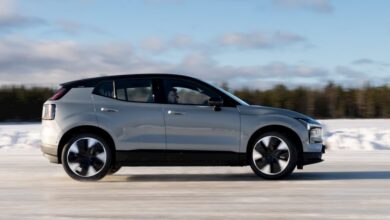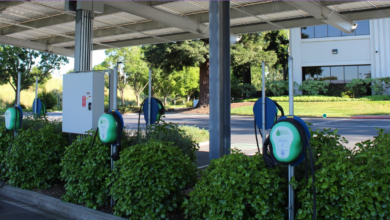5 Reasons You Should Only Buy an Electric Vehicle if You Make Over $120,000 a Year

It’s hard to believe that 12 years have passed since the first popular mass market electric vehicle (EV), the Tesla Model S, was introduced to an expectant yet skeptical American public. Back in 2012, you would have had to pay between $57,400 and $87,400 for a Model S, depending on trim (around $78,428 to $119,419 in today’s dollars), not an insignificant amount then or now.
Depending on brand and model, EVs have become more affordable since 2012, mainly due to cost cutting by electric automakers (Tesla mainly) and federal tax credits on certain models. But even with the drive to go electric, EVs are significantly more expensive than internal combustion engine-powered vehicles (ICEs).
There are many reasons you should consider swapping out your gas-powered car for a fully electric vehicle, and EVs have been gaining in popularity like never before. But they’re not for everyone and simply not smart purchases if you can’t afford to keep them on the road. Being car-poor for the sake of owning an electric vehicle is foolish unless you’re planning on living in your EV to save money on rent and utilities.
The practical way of figuring out if you can buy afford an EV is to use a percentage of income budget limit and consider the total cost of ownership over time.
“Too often, people will purchase a car without having a realistic understanding of how much more it will actually cost to own it,” wrote the Financial Samurai, Sam Dogen, on CBNC’s Make It. “As a result, they end up spending too much and exceeding their budget.”
1. Initial Cost
As inventory has increased and MSRPs have slowly decreased, bringing them closer to non-luxury “traditional” vehicles, EVs are becoming more readily available to a large amount of people who previously couldn’t afford them. But how much do you have to make to afford one?
Many experts have jumped upon the 10% bandwagon rule, which basically means that you should never spend more than 10% of your income on a car, including monthly car payment, insurance, maintenance and gas (or electricity/charging fees). So, if you make $50,000 a year, you shouldn’t spend more than $5,000 on a car, all expenses in.
Can anyone do that? Using the 10% rule, buying a new EV for the average price of $55,242 would require you to make an absurd median income of $552,420. The average used-vehicle listing price at the end of January 2024 was $25,328, down 4% from a year earlier, but still pricey. Considering the median household income was $74,580, according to the U.S. Census Bureau, most new and used EVs are way out of the average American’s price range.
More Americans are committing to monthly car payments topping $1,000 than ever, according to a 2023 report by Edmunds. Using an example from Capital One, on a typical 4-year loan, an EV with a transaction price of $53,000 would cost about $1,100 per month. To pay for this, you would need to make at least $120,000.
2. Long-Term Savings
As competition continues to increase and better technology and cheaper batteries and source materials help EV makers normalize MSRPs, prices will go down and eventually match those of gas-powered vehicles. Some Regardless, right now, “every EV model in every state is cheaper to fill than a gas-powered vehicle,” according to Energy Innovation.
Current EVs are 2.6 to 4.8 times more efficient at traveling a mile compared to ICE vehicles. Even at the lowest cost savings, the average electric SUV is still $15 cheaper to fill than a Honda CR-V, per Energy Innovation, and the average truck and sedan fill up savings were nearly $24 and $26, respectively.
Paying less throughout the lifetime of your EV will offset the upfront cost of your EV. Some argue it isn’t enough to make a huge difference when you’re spending more to buy one, but most are in agreement with the groups like the Environmental Defense Fund, which estimates that owning an EV should save you up to $18,440 over 10 years.
3. Charging Fees
Ideally, you should have an EV charger at home, but they aren’t cheap. According to Capital One, Level 1 charging cables often come with new EVs and only a common household 120-volt outlet to work, but if you need an upgrade in outlet or equipment, you could end up paying about $300-$600. Installing a Level 2 or 3 station at home (that can charge a battery electric vehicle to 80% in four to 10 hours, or fast-charge a battery), plus labor and any adapter and circuits upgrading, could run you between $500 and $700, and tens of thousands, respectively.
If you live in an apartment or a place without dedicated parking, relying on public chargers can be more challenging and your ability to handle public charging costs should be factored into your decision. Infrastructure now isn’t reliable and will cost you time and money while out and about. Expect to pay between $10 and $30 on average for charging an EV at a commercial charger, from almost empty to almost full.
4. Maintenance and Repair Costs
Although many maintain that the average electric car repair costs are comparable between ICE vehicles and EVs, unexpected repairs might be costly. “The frequency of repairs may go down,” Bill Newman, head of auto at SAP North America, told Business Insider. “But the costs for repair will go up.”
However, regularly scheduled maintenance is cheaper with EVs. According to AAA, electric vehicles do not require as much maintenance as gas-powered ones since they don’t need oil changes or air-filter replacements. “If maintained according to the automakers’ recommendations, electric vehicles cost $330 less than a gas-powered car, a total of $949/annually,” says AAA.
5. Insurance Premiums
You would never be charged more for simply driving an electric vehicle. However, your premiums might be more because EVs typically cost more than ICE vehicles (around $7,000 more if you compare current KBB average transaction prices) and repairs, although less frequent, might cost more and require a specialist. As EVs become the auto market standard, costs should flatten out, but for now, this is another cost reality of owning an electric vehicle.
More From GOBankingRates
Source



